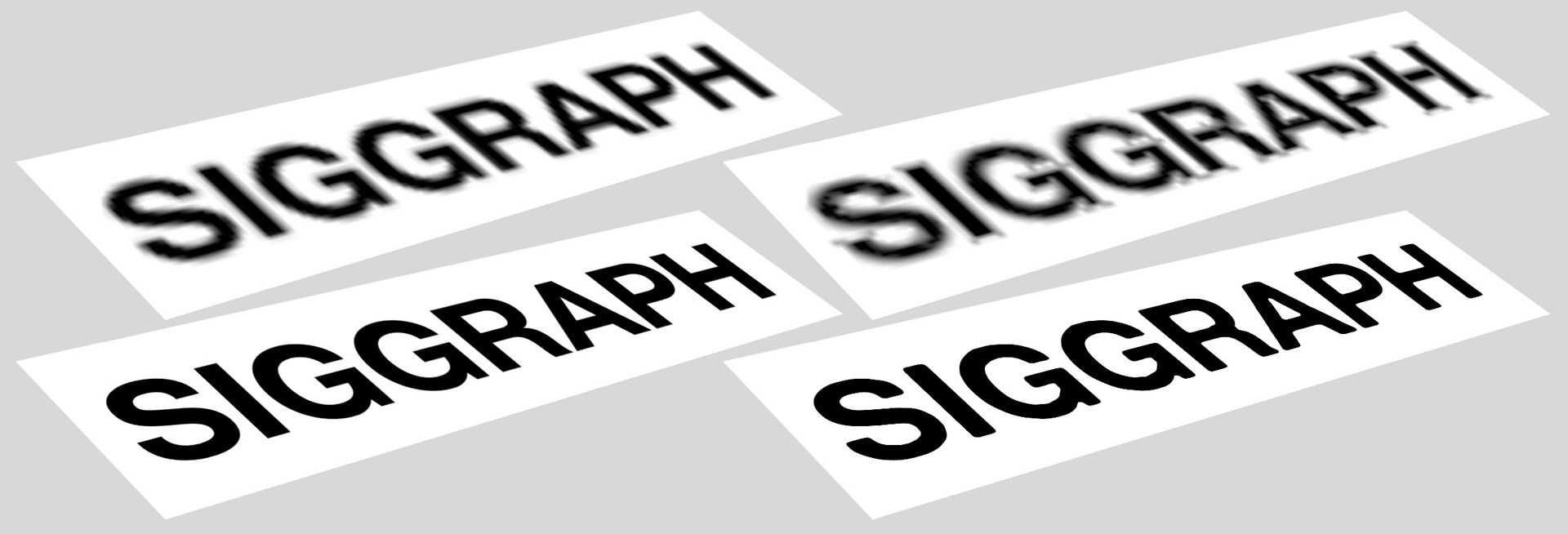“Efficient Magnification of Bi-Level Textures”
Conference:
Type(s):
Title:
- Efficient Magnification of Bi-Level Textures
Presenter(s)/Author(s):
Abstract:
Standard texture magnification through bilinear interpolation blurs road signs and similar items excessively. We use a small, single- channel MIP map and a pixel shader of twelve instructions to strongly improve the look of bi-level (aka binary) textures. The main idea is to threshold the most detailed level of the MIP texture into a bi-level image. For an optimum result, the texture does not contain the original image, but a processed version.
The focus on bi-level textures and on strict efficiency (one texture read, no branching) sets this method apart from recent work: Ramanarayanan et al. [2004] as well as Tumblin and Choudhury [2004] introduce data structures for textures containing smooth gradients as well as hard edges. Sen [2004] additionally addresses GPU- based rendering using a pixel shader of 45 instructions.
References:
Ramanarayanan, G., Bala, K., and Walter, B. 2004. Feature-based textures. In Eurographics Workshop on Rendering. A. K. H. W. Jensen, Ed., 265–274.
Sen, P. 2004. Silhouette maps for improved texture magnification. In Proc. of the ACM SIGGRAPH/EUROGRAPHICS Conference on Graphics Hardware, Eurographics Association, 65–73.
Tumblin, J., and Choudhury, P. 2004. Bixels: Picture samples with sharp embedded boundaries. In Eurographics Workshop on Rendering, A. K. H. W. Jensen, Ed., 186–196.




